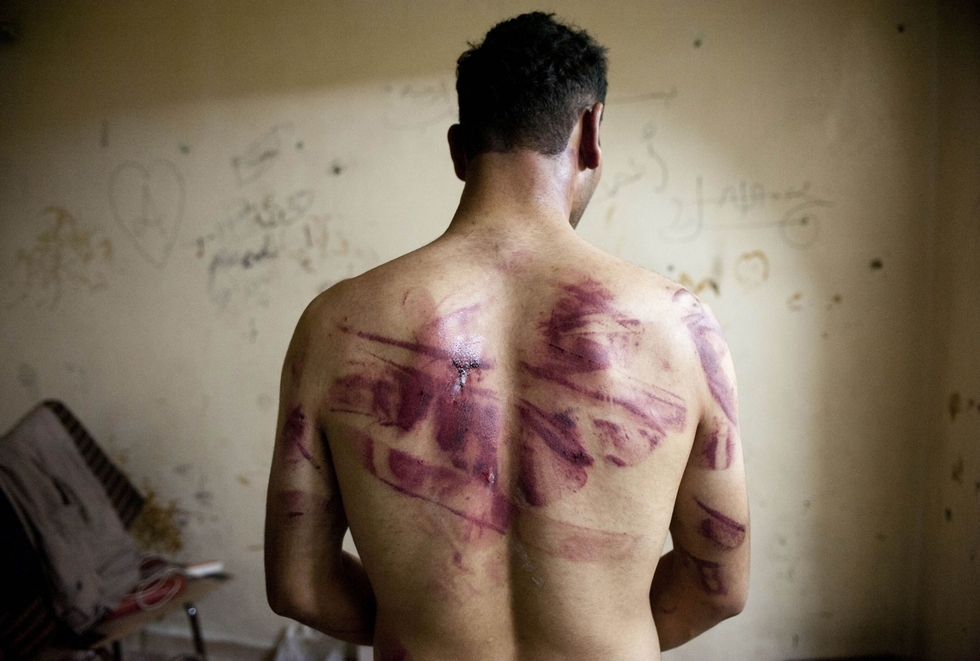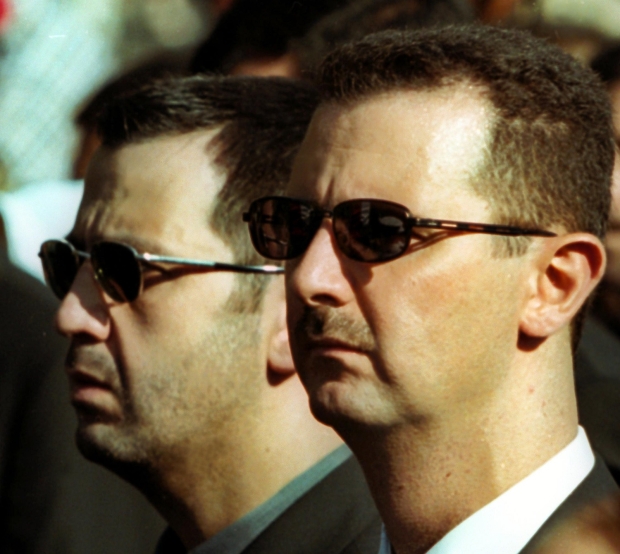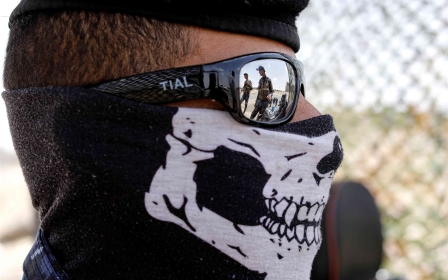The Syrian war crime suspects who could be brought to justice

NEW YORK, United States – From a government torture and execution programme to poison gas attacks and the Islamic State (IS) group’s inter-ethnic killing spree, there are widespread allegations of crimes committed during Syria’s civil war and the conflict in neighbouring Iraq.
But thanks to a lack of jurisdiction by the International Criminal Court (ICC) and Russian efforts to stymie probes of its ally, the government of Syrian President Bashar al-Assad, the chances of seeing mass-murderers in the dock any time soon is remote.
Advocates of justice, however, are not giving up. Moscow could not stop 105 United Nations members from voting in the UN General Assembly in December to create an office to gather evidence and lay the groundwork for future prosecutions.
This month, the UN appointed Catherine Marchi-Uhel, a French jurist, to run the so-called International, Impartial and Independent Mechanism (IIIM), which is currently building up to a 50-strong staff in Geneva, Switzerland.
Balkees Jarrah, a lawyer for Human Rights Watch (HRW), lauded Marchi-Uhel’s posting as “part of a push” to ensure the “horrendous atrocities committed in Syria these past six years cannot be swept away with a veto”.
Down the road, Jarrah said the IIIM would “catalyse and coordinate global efforts” to try Syrians at the ICC, a permanent war crimes tribunal in The Hague, or form a bespoke court akin to those used against atrocities in Rwanda or Cambodia.
We have never seen a situation as well documented as the conflict in Syria
-Balkees Jarrah, HRW
The obstacles are political, not the lack of evidence, she emphasised.
The Commission for International Justice and Accountability (CIJA), an independent group of lawyers based at a secret European office, has collected some 700,000 pages of intelligence and security archives from war-ravaged Syria.
They have access to 55,000 photos of detainees’ bodies – some with gouged-out eyes – smuggled out by a former forensic photographer code-named Caesar who worked at Tishreen military hospital, between 2011 and mid-2013.
In February, Amnesty International, a rights group, reported that some 13,000 people were hanged over five years at the state-run Saydnaya prison near Damascus. In May, the United States said the government had built a crematorium there.
Investigators from the UN Human Rights Council's commission of inquiry on Syria said government forces dropped chlorine bombs and hit an aid convoy in the battle for Aleppo in 2016, while rebels fired on civilian areas and used human shields.
A probe by the Organisation for the Prohibition of Chemical Weapons (OPCW) and the UN blamed Syrian government forces for three chlorine gas attacks in 2014 and 2015 and IS for using mustard gas. Use of the banned nerve agent sarin has also been documented.
“We have never seen a situation as well documented as the conflict in Syria,” Jarrah told Middle East Eye.
Meanwhile, the US-based Syria Justice and Accountability Center has built a database that facilitates the cross-referencing of evidence found in some 500,000 pages of official documents and thousands of online videos.
The centre’s director, Mohammad al-Abdallah said the ubiquity of cellphone cameras and the ease of file-sharing gave rise to an abundance of evidence against everyone from the president all the way down to foot soldiers.
“There’s thousands, if not hundreds of thousands, of people who engaged in committing violations from the government and the rebel sides – and you can’t put everybody on trial,” Abdallah told MEE.
According to Stephen Rapp, a war crimes prosecutor, the Syrian government’s detention scheme is especially interesting to lawyers because of its “paper trail” from Caesar’s photos of tortured inmates’ corpses to documented orders leading all the way to Damascus.
Evidence is already proving its worth. Prosecutors in France, Germany, Spain and other European countries are processing investigations on alleged war crimes in Syria using so-called “universal jurisdiction” laws.
Damascus denies the allegations, Russia says international prosecutions can be politicised.
Against this backdrop, MEE talked through the evidence with Rapp, Abdallah, Jarrah and others and drew up a list of some likely indictees should Marchi-Uhel’s IIIM ever get a Nuremberg-style war crimes tribunal off the ground.
President Bashar al-Assad
With his slight lisp and meek demeanour, Assad makes for an unlikely war criminal. He trained as a doctor and eye specialist, only succeeding his father as president in July 2000 after his brother, Bassel, the heir apparent, died in a car crash.
In January, the 51-year-old dad-of-three was named on an ICC list of 15 people “to be scrutinised in relation to use of” chemical weapons by government forces in the 2014 and 2015 attacks identified in the joint UN-OPCW probe.
According to Rapp, “there’s no problem with the paper trail to Assad”. Documents that link him to the arrest, detention, torture and execution of dissidents are filed away in cabinets in Europe, just waiting for a green light to prosecute.
Bashar’s younger brother Maher had a reputation as a brute that grew at the start of anti-government rallies, when he was rumoured to be the unidentified gunman taking pot-shots at protestors in a viral video from 2011.
He was also named on the ICC chemical weapons list. As commander of the elite 4th Armoured Division, he has been linked to the 2013 chemical attack on Ghouta as well as sarin-filled rocket attacks.
Ali Mamlouk, head of the National Security Bureau
In March, the European Center for Constitutional and Human Rights (ECCHR) filed a criminal complaint in Germany against Mamlouk and five other top military intelligence chiefs.
Lawyers said he ran all four Syrian intelligence services that were behind the “systematic and widespread torture” of government opponents and activists. His deputy, Abdelfattah Qudsiyeh, is also named.
HRW linked Mamlouk directly to atrocities in Daraa governorate.
Other 'Crisis Cell' officials
As anti-government protests spiralled into violence, Assad reportedly created a “Crisis Cell” to suppress the uprising. He leads the group, through which he delegates day-to-day decisions to such officials as Maj Gen Muhammad Mahmud Mahalla, military intelligence chief; and Maj Gen Jamil Hassan, head of Air Force Intelligence, and others.
US and European Union officials link these men to ordering chemical weapons attacks and have slapped sanctions on them.
Islamic State ringleaders
The militants do little to hide their atrocities. They have even advertised roundups and executions of gays, Shia and other groups via gory videos. The UN blames IS for a “staggering” array of crimes, including the murder of Yezidis in Iraq and enslaving women.
Putting IS leaders in the dock will be tough, however. Multiple reports suggest the group’s leader Abu Bakr al-Baghdadi is already dead. As Iraqi forces liberated the IS stronghold of Mosul this week, videos emerged of militiaman being tossed off a cliff and shot. Efforts are underway to prosecute captured IS fighters, but many will not live to see their day in court.
Rebel leaders
UN reports indicate that all sides – rebel and government – have committed crimes during Syria’s brutal conflict.
In one well-publicised incident, Jaish al-Islam rebels drove caged prisoners from Assad’s Alawite sect on pick-up trucks through Douma and Eastern Ghouta to deter government air strikes.
According to Rapp, it was a clear-cut war crime. But judges look for something else, he added. “A variety of rebel groups have abused people on an occasional basis. A court doesn’t prosecute occasional acts of abuse, it needs to deal with organised abuse as a matter of policy,” Rapp told MEE.
New MEE newsletter: Jerusalem Dispatch
Sign up to get the latest insights and analysis on Israel-Palestine, alongside Turkey Unpacked and other MEE newsletters
Middle East Eye delivers independent and unrivalled coverage and analysis of the Middle East, North Africa and beyond. To learn more about republishing this content and the associated fees, please fill out this form. More about MEE can be found here.





